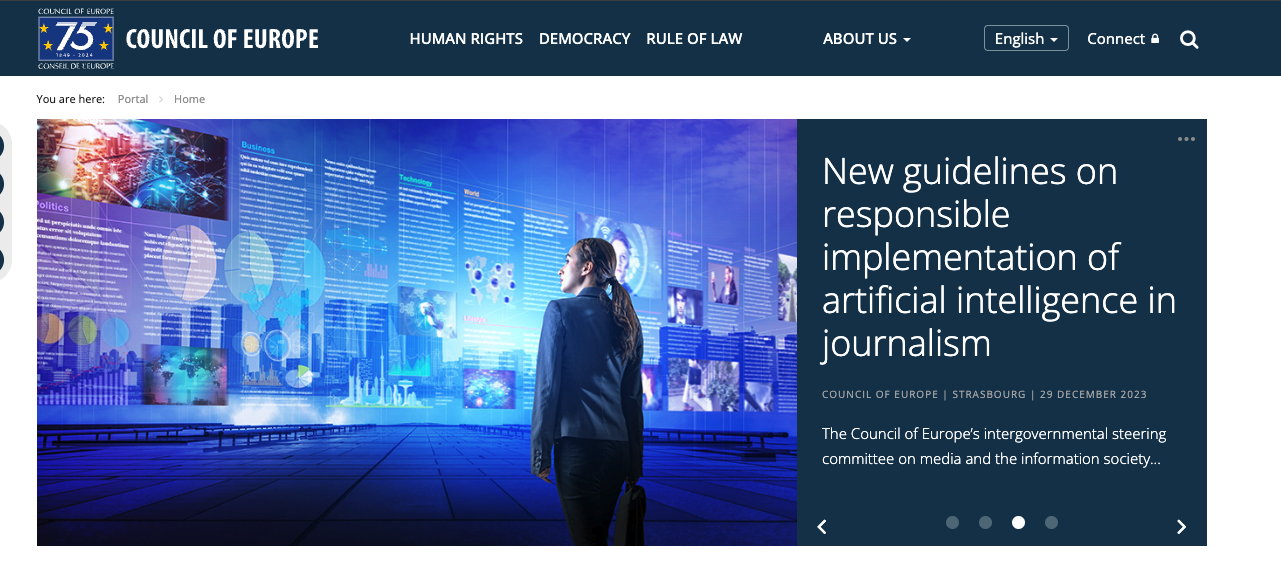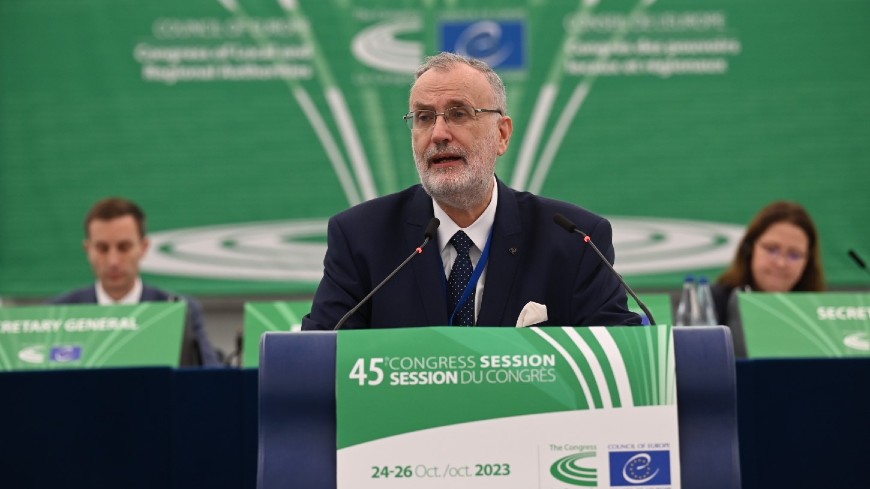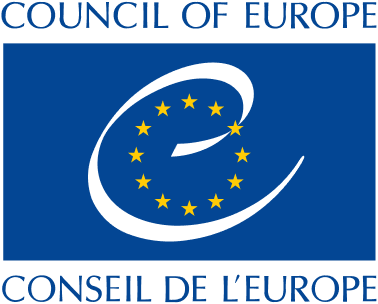Europe's leading organization for the protection of human rights created a modern website with Liferay.
How the Council of Europe Expanded Their Digital Presence
46
member states
70+
year history
22%
More site visits
Outline
Jump to Section
Background
Founded on May 5, 1949 by the Treaty of London, the Council of Europe is the continent’s leading organization for the protection of human rights, democracy, and the rule of law.
It includes 47 member states, 28 of which are members of the European Union, and advocates freedom of expression and of the media, freedom of assembly, equality, and the protection of minorities. The European Convention on Human Rights, to which its members are signatories, allows every one of Europe’s 820 million citizens to bring complaints for human rights violations before the European Court of Human Rights in Strasbourg, once all possibilities of appeal have been exhausted in the member state concerned.
The Council of Europe also helps member states fight corruption and terrorism and undertake necessary judicial reforms. Its group of constitutional experts, known as the Venice Commission, offers legal advice to countries throughout the world.
It includes 47 member states, 28 of which are members of the European Union, and advocates freedom of expression and of the media, freedom of assembly, equality, and the protection of minorities. The European Convention on Human Rights, to which its members are signatories, allows every one of Europe’s 820 million citizens to bring complaints for human rights violations before the European Court of Human Rights in Strasbourg, once all possibilities of appeal have been exhausted in the member state concerned.
The Council of Europe also helps member states fight corruption and terrorism and undertake necessary judicial reforms. Its group of constitutional experts, known as the Venice Commission, offers legal advice to countries throughout the world.
Challenges
The Council of Europe is made up of several operational entities, each in charge of its own programs. “We have to deal not only with organizational diversity, but also with the complexity that comes with managing the specific features of 47 member states, such as legal aspects, political events, and the extent to which they have adopted new technologies. So we needed a web environment that was robust and, above all, suited to a variety of usage practices,” says Costas Skouras, Director of Information Technology.
In 2010, there were around 150 sites publishing content about the different programs, but without any real consistent editorial line. So it was difficult for users to find the right information among all the thousands of publicly available and restricted-access content items. A project was, therefore, conceived to implement a more effective communication tool that would aggregate the plethora of existing sites and applications.
The Communications Directorate also wanted to make use of a new tool to improve and modernize its communications. “The new web portal needed to convey a coherent image of the Council and be more interactive, offering dynamic content such as multimedia items and social networks,” explains Marc Ulrich, Head of the Development Division.
In 2010, there were around 150 sites publishing content about the different programs, but without any real consistent editorial line. So it was difficult for users to find the right information among all the thousands of publicly available and restricted-access content items. A project was, therefore, conceived to implement a more effective communication tool that would aggregate the plethora of existing sites and applications.
The Communications Directorate also wanted to make use of a new tool to improve and modernize its communications. “The new web portal needed to convey a coherent image of the Council and be more interactive, offering dynamic content such as multimedia items and social networks,” explains Marc Ulrich, Head of the Development Division.
Implementation
After a call for tenders in 2010, the Council of Europe chose the Liferay solution as the one that best met the technical and budgetary requirements set out in its specifications. In addition, “the solution’s longevity, scalability and technical platform on which new offers could be built really won us over. We know that with this platform we can go further and develop our projects whenever we want,” adds Marc Ulrich.
The Council of Europe’s internet portal now runs on Liferay version 6.2, which hosts 85 sites and will eventually host all 200 existing sites, more than half of which have already been migrated or are in the process of being migrated.
The Council of Europe’s internet portal now runs on Liferay version 6.2, which hosts 85 sites and will eventually host all 200 existing sites, more than half of which have already been migrated or are in the process of being migrated.

Results
The new portal has provided the Council of Europe with a highly effective communication tool. Unlike the previous version, this portal can be used not only to publish content, but also for corporate communications. It is already smartphone- and tablet-compatible and on average is receiving 22% more visits and 15% more unique visitors per month than in 2012.
Liferay’s advanced features allow teams to respond better to the political constraints of member states and to manage access rights more easily. Today, nearly 40,000 value-added web contents, posted by around 300 contributors, are available online. Business teams are autonomous and have access rights to add, edit and publish content. A standard structure and “look and feel” have also been created in order to convey a coherent image of the Council.
The personalization of services has been proven useful, too. It is essential for high-profile projects such as the Council of Europe’s joint programs with the European Union and the internet platform launched to help protect the media and promote the safety of journalists. “This customized space allows journalists’ organizations to submit reports and alert the Council of Europe whenever a journalist feels threatened, is injured or has their rights violated,” explains Michel Weber, in charge of the web platform.
Productivity gains and time savings are also important benefits. “It is much easier to manage our sites. Before, if you wanted to add any content other than a simple document, you needed to be an HTML expert! Now, we have a standard interface which makes the process quicker and easier,” says Michel Weber. In terms of efficiency, the Information Technology Department has noticed a significant rise in the productivity of its teams, who can now spend part of their time on other projects and devote their energy to much more interesting tasks.
“In short, Liferay has enabled us to move on to the second stage of our digital transformation and has become an integral part of our content management strategy. The benefits we have seen in terms of time savings, team productivity and improved user satisfaction are [a] testament to the success of our portal,” concludes Costas Skouras.
In early 2014, the Council of Europe once again chose Liferay to overhaul its intranet portal as part of its technical platforms convergence project. In the future, the Council wants to offer more “standard business packages”, i.e. spaces dedicated to each business department, and to transform internal communication spaces into a real corporate portal.
Liferay’s advanced features allow teams to respond better to the political constraints of member states and to manage access rights more easily. Today, nearly 40,000 value-added web contents, posted by around 300 contributors, are available online. Business teams are autonomous and have access rights to add, edit and publish content. A standard structure and “look and feel” have also been created in order to convey a coherent image of the Council.
The personalization of services has been proven useful, too. It is essential for high-profile projects such as the Council of Europe’s joint programs with the European Union and the internet platform launched to help protect the media and promote the safety of journalists. “This customized space allows journalists’ organizations to submit reports and alert the Council of Europe whenever a journalist feels threatened, is injured or has their rights violated,” explains Michel Weber, in charge of the web platform.
Productivity gains and time savings are also important benefits. “It is much easier to manage our sites. Before, if you wanted to add any content other than a simple document, you needed to be an HTML expert! Now, we have a standard interface which makes the process quicker and easier,” says Michel Weber. In terms of efficiency, the Information Technology Department has noticed a significant rise in the productivity of its teams, who can now spend part of their time on other projects and devote their energy to much more interesting tasks.
“In short, Liferay has enabled us to move on to the second stage of our digital transformation and has become an integral part of our content management strategy. The benefits we have seen in terms of time savings, team productivity and improved user satisfaction are [a] testament to the success of our portal,” concludes Costas Skouras.
In early 2014, the Council of Europe once again chose Liferay to overhaul its intranet portal as part of its technical platforms convergence project. In the future, the Council wants to offer more “standard business packages”, i.e. spaces dedicated to each business department, and to transform internal communication spaces into a real corporate portal.

